Pancha Bhoota means the five elements of nature, and Sthalams refers to the temple, shrine, or abode. The Pancha Bhuta Sthalams are regarded as a cluster of five temples in South India, carrying immense spiritual importance in Hinduism.
These religious sites stand as witnesses to the bond of human and natural elements. In the articles, we will deeply indulge and understand the concept of these sustainable natural elements along with the mystic of Panch Bhoota Sthalams. We will also cover their significance with a view to pilgrimage.
Jambukeshwarar Temple (Water Element) – Thiruvanaikaval
This abode of Lord Shiva is located in the Thiruvanaikaval of Tamil Nadu, representing the water element. The Lingam of the deity here is called Appu Lingam. It is believed to have been constructed by Kocenganna Chola around 1800 years ago.
Jambukeswarar Temple is in the 13th position of the largest temples in India (Over 18 acres). In addition to that, you will never see the water stream below the lingam drying up. During the Uchi Kala Pooja, the priest dresses like a woman, which makes this ritual special and is attended by thousands of pilgrims almost daily.
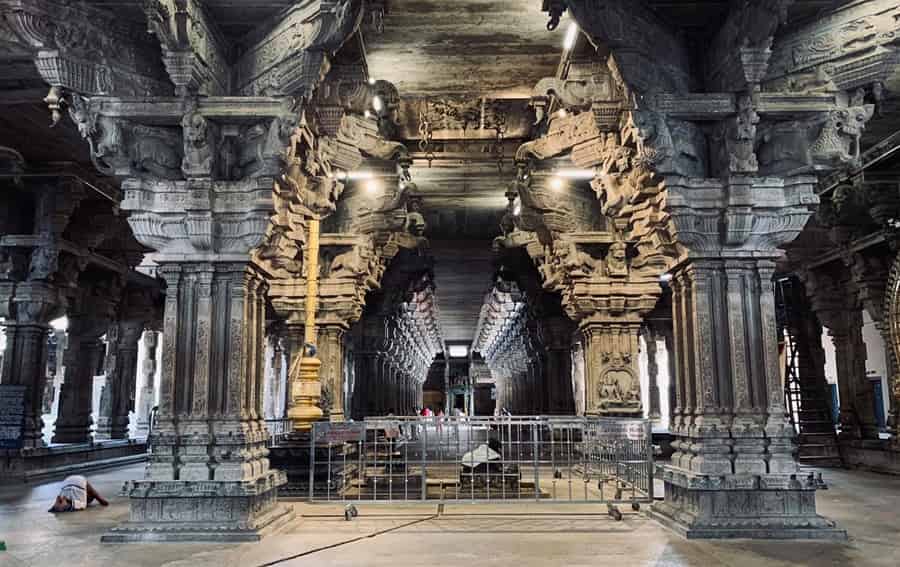
Religious Significance
- There are many legends of the temple; the most believed is that the Maa Parvati, in her form of Akhilandeshwari, made a Shiva lingam of water and worshipped him at this same place.
- When Shiva came, he enlightened her with the ultimate knowledge. And, hence, the people do not celebrate the Shivratri as they honor their Guru and Shishya relation more.
Ekambareswarar Temple (Earth Element) – Kanchipuram
The Ekambareswarar temple of Kanchipuram, Tamil Nadu, is among the most revered sites dedicated to Lord Shiva. It represents the Prithvi element, and the Lingam of the God is made up of Sand.
The complex of the temple covers an area of 25-40 acres, making it the 10th largest temple in India. It also features a hall comprising 1000 pillars and a 190-foot-tall Gopuram.
This enshrine has been there since 600 CE, being constructed over and over by the kingdoms of South India.
At the sanctum, you will also see an ancient 3500-year-old mango tree with four distinct varieties of leaves, under which Maa Parvati performed a penance.
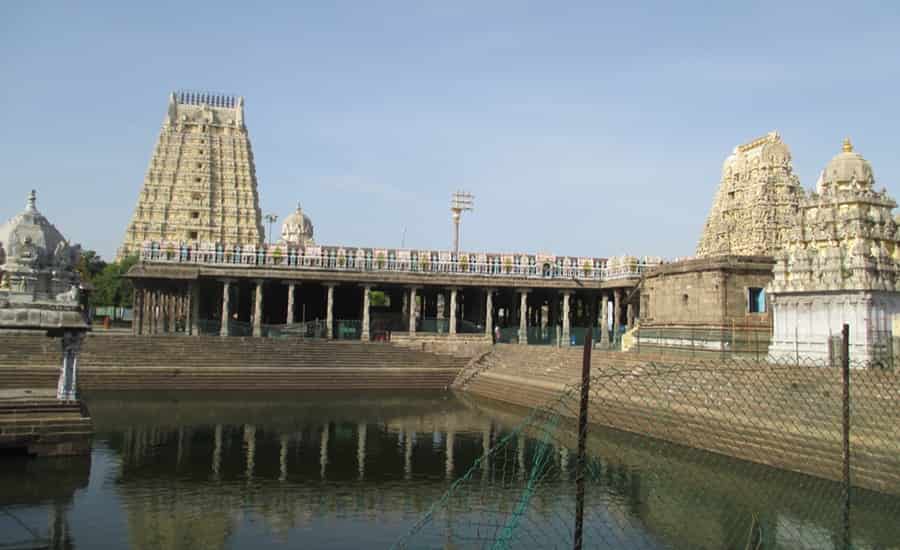
Religious Significance
- The legend linked to the temple is that when the goddess Parvati was in her meditation, Shiva, to test her faith and devotion, sent Maa Ganga to trouble her.
- The tree is now a testament to their pure love and ultimate union, and it is said that whoever prays under this temple receives spiritual blessings from God.
- Locals here also say that if a Childless woman has a fruit of this tree, there are chances for her to conceive.
Arunachaleswarar Temple (Fire Element) – Thiruvannamalai
The renowned Arunachaleswarar temple is known by different names, sometimes as Annamalaiyar or Tiruvannamalai. It is situated at the base of the Arunachal hills in Tamil Nadu. In this residence of Shiva, he is worshipped in the form of his eternal flame, representing the Agni element.
The huge complex of the temple spans around 25 acres of land and is one of the largest temples dedicated to Bholenath worldwide.
If we look at its structural side, it features Dravidian architecture, with the highest Gopuram of 217 feet. It also includes several shrines of other deities, a hall of a thousand pillars, and massive stone walls, making it look like a giant fort.
Its construction history dates back to the 9th century, built by the Cholas and the Vijaynagar Empire.
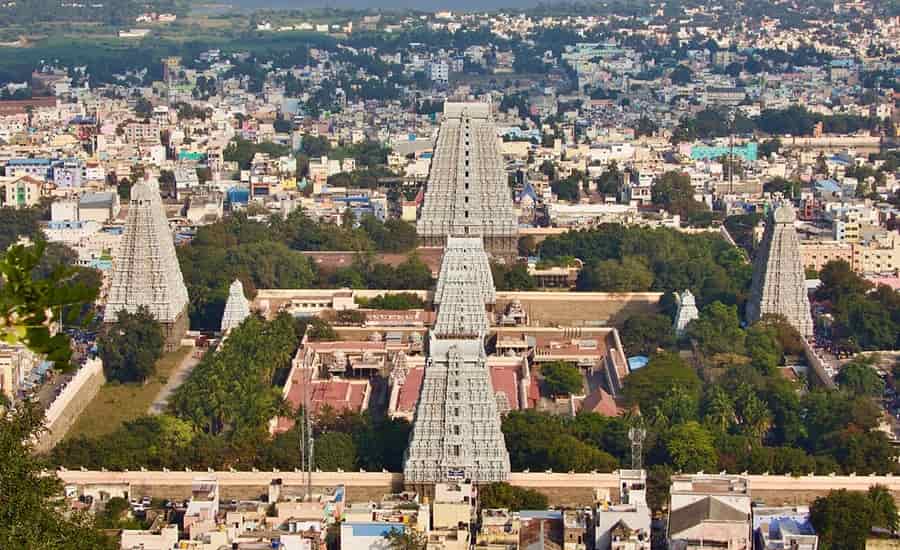
Religious Significance
- According to the scriptures, Goddess Parvati once playfully closed Shiva’s eyes, due to which the world went into a state of pure darkness.
- To restore the light of the earth, Shiva appeared as a fiery column at the top of the hills.
- On seeing this, Vishnu ji and Brahma ji challenged each other to find the source of Shiva’s appearance. However, they both failed miserably, but for lying, Brahma ji was punished.
- During Purnima, thousands of devotees gather here and perform Girivalam, a circumambulation of the entire hill, including the temple.
Srikalahasteeswara Temple (Air Element) – Srikalahasti
This Hindu Mandir is located in Srikalhasti of Andhra Pradesh and is devoted to Lord Shiva in Kalahasteeswara form, representing the Vayu element.
It features a 120-foot Gopuram and was built in the period in the region of the Vijaynagar Empire. You will see here the Pooja of Rahu-Ketu, and hence, it remains open even during Solar and Lunar eclipses, which is slightly different from other temples.
On the campus, along with the Shivling, his consort Gnana Prasunambika, there are other deities as well. The architecture of the premises highly reflects the Dravidian style, and some of its part was initially built in the Cholas kingdom.
There is also a flame at the inner sanctum of the temple, and it constantly flickers without any air involvement.
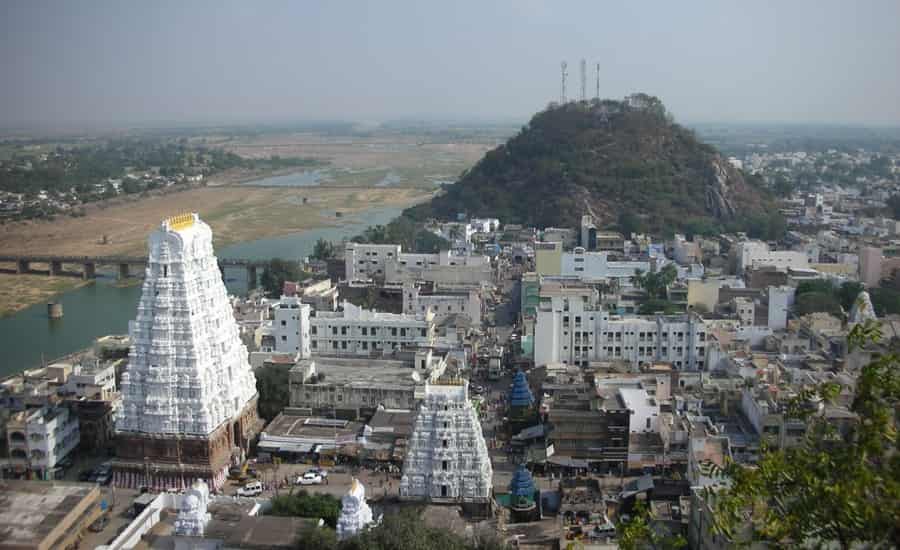
Religious Significance
- The name of the shrine, “Srikalahasti,” combines three meanings: Sri (spider), kala (serpent), and hasti (elephant), who are said to worship Mahadev here and attain salvation.
- It is suggested to visit this Mandir to achieve liberation and for the remedy of planetary movements.
Thillai Nataraja Temple (Ether/Space Element) – Chidambaram
As the name suggests, Thillai Nataraja Temple is dedicated to Mahadev in his cosmic dancer mudra. This sanctum in Chidambaram embodies the Akasha element, which is supposed to be as old as 1000 years.
Its architecture is built in Chola-Pandyan style and comprises 9 Gopurams, among which one has a gold-plated roof. You can also observe the intricate carvings of 108 Bharatnatyam postures on the walls of its premises.
The overall campus is spread over 40 acres, making it the fifth-largest temple in India.
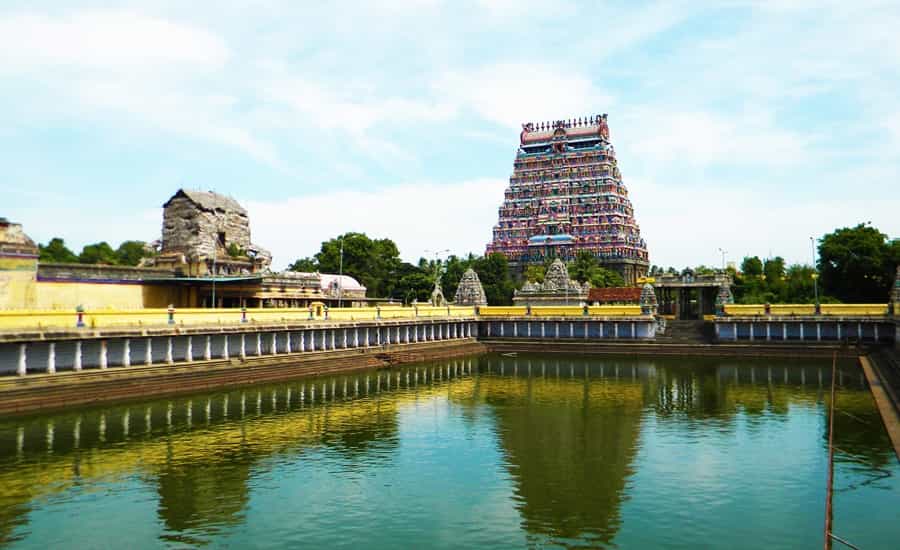
Religious Significance:
- This is the same place where the supreme God, Shiva, performed his Tandava (the dance of bliss) in the dense forests of Thillai and established the temple’s great reverence.
Also Reads on:

 Call
Call WhatsApp
WhatsApp Enquiry
Enquiry
Very informative blissfully! Pictures are revealing divinity! Om Namah Shivaya
There is a correction in information in last picture, kindly refer space is given instead of water, instead of Thiruvanaikkaval, Chidambaram is given kindly refer please
corrected